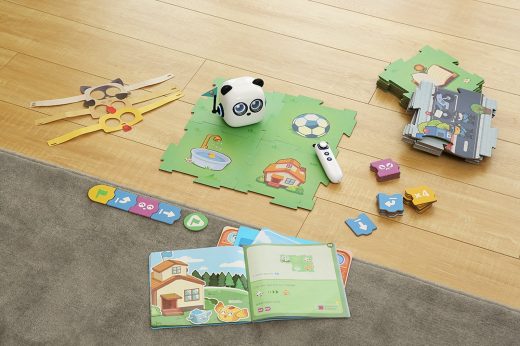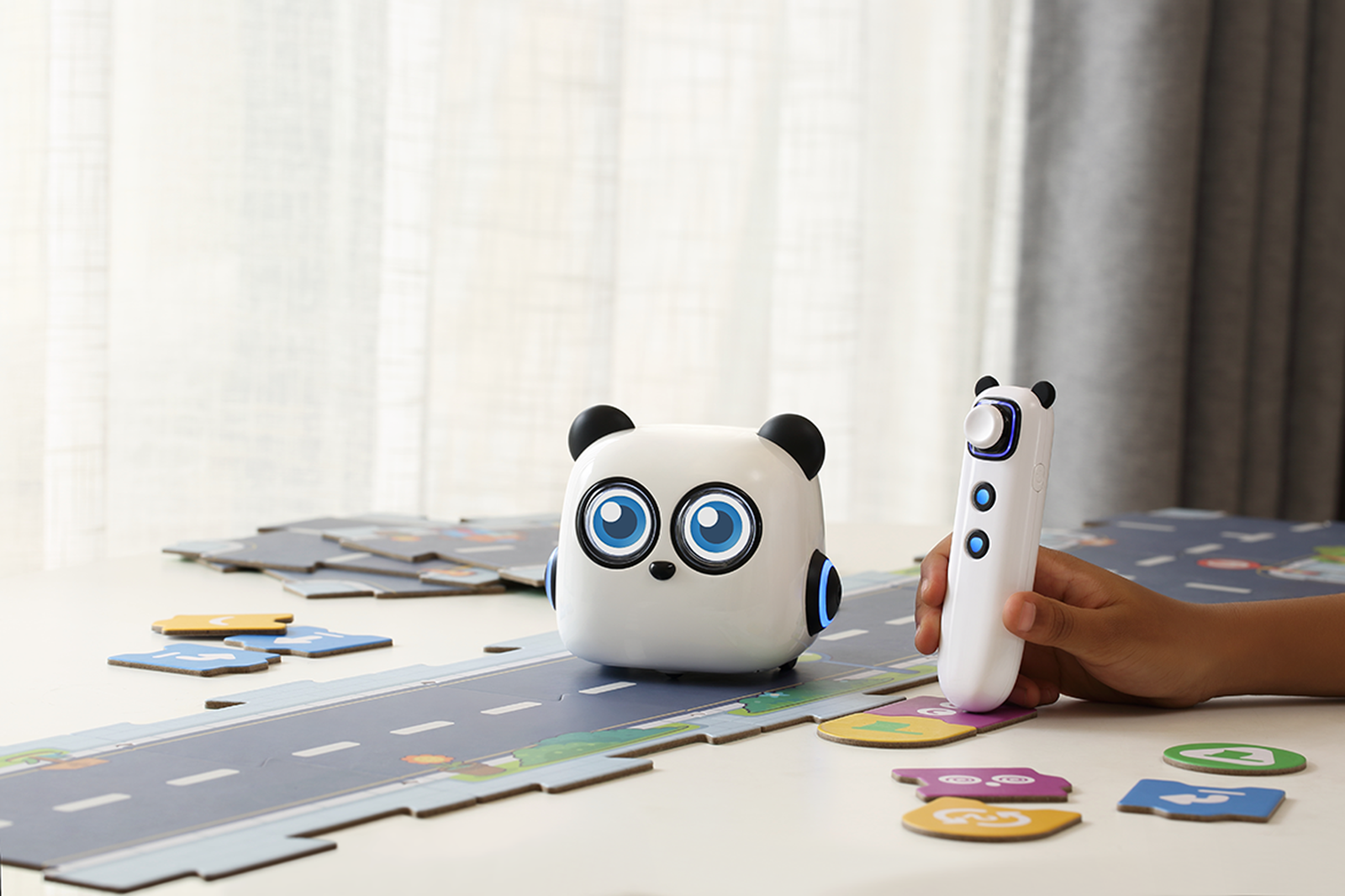mTiny robot review: Screen-free coding for kids
My five- and seven-year-old constantly fight over who gets the iPad first. We have one, and they get to use it in tiny doses, usually when I’m at my wit’s end. Their favorite app? ScratchJr, MIT’s go-to coding tool for kids. They like to code. No. They love to code, like the good little 21st-century humanoids they are.
They love coding so much and I am so unwilling to give them their own devices that I decided to try something new. It’s also something that sounds so counterintuitive it actually might work: screen-free coding.
This is how mTiny knows to make chomping sounds when it lands on a tile with bamboo on it, close its eyes and snore on the bed tile, and make its eyes swirl to the siren on the police station tile. It also gave me cause to bellow at the kids to keep the cards in the box or the cute storage bag, not to step on them, not to bend them, not to gnaw on them. If the cards get ruined then there’s no coding.
As the kids have gotten better at using mTiny, they’ve built more-complicated scenes with the tiles and started using more-challenging coding pieces, like the multipliers and the facial expressions. Now when they want mTiny to move four tiles in a row or turn around in a circle, they tap a “turn” coding card and use the “x4” coding card. mTiny includes several of these in addition to different reactions like smiling and giggling.
As for the game cards — they’re just OK. My kids could take them or leave them. They can use the tap pen to make mTiny mimic a piano and play soccer. For younger kids, I can see the appeal. But at five and seven, my kids are past it.
There’s a multiplayer option too, where kids can code multiple mTinies on the same tiles. I didn’t experiment with this feature but imagine that preschool classrooms with multiple robots could have some success here.
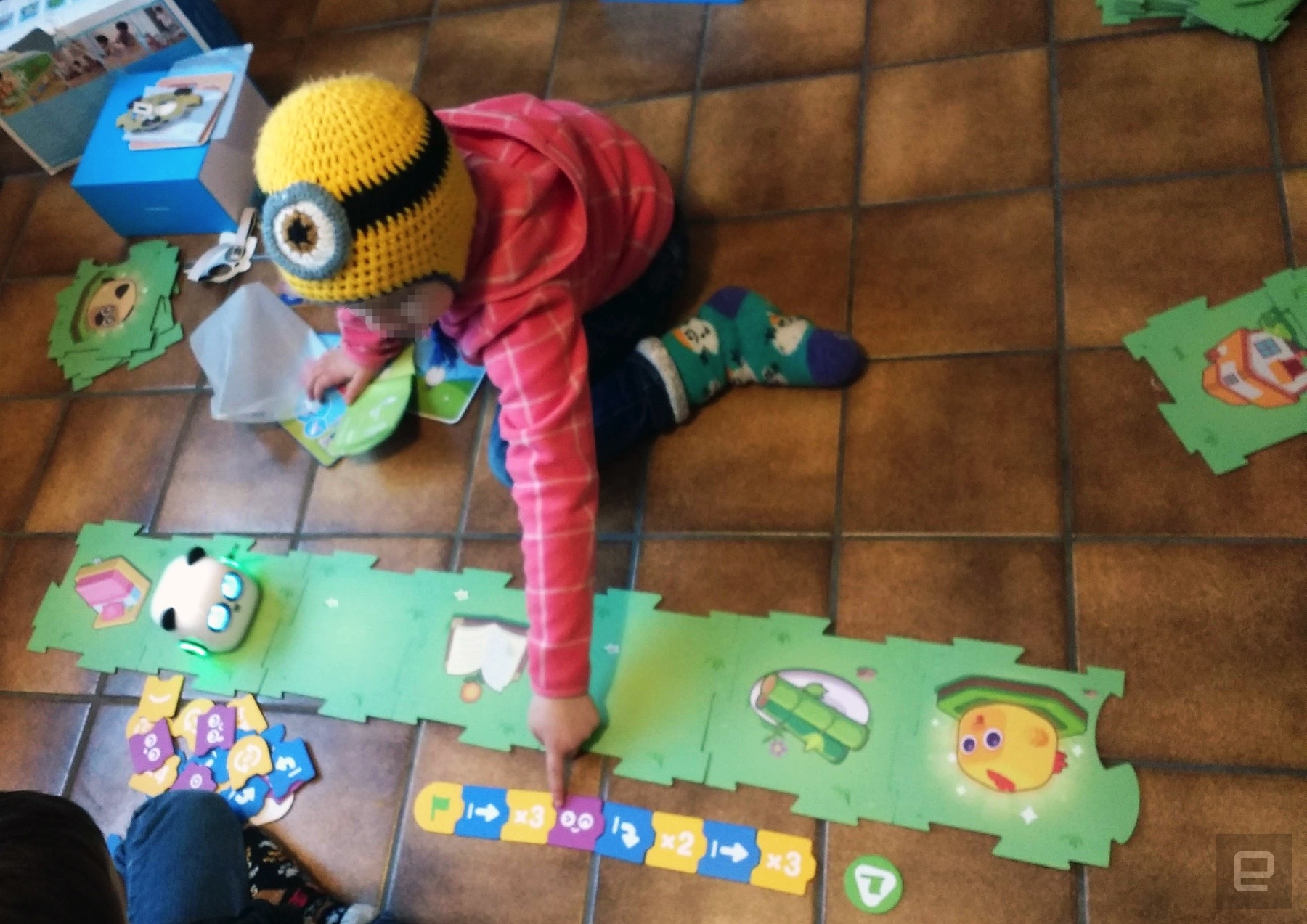
While my five-year-old loves playing with mTiny, my seven-year-old has gotten a bit bored. He still likes the robot — there’s no question about that — but there are only so many iterations of the city scene he can build and a limited number of coding cards, so his interest wanes after about 20 minutes. The five-year-old likes creating different scenarios with the tiles, and there’s still enough variation in the coding that she remains engaged.
While Makeblock suggests that mTiny is good for ages four and older, I wouldn’t buy it for a five-year-old. I’d buy it for a three- or four-year-old who’ll use it until age five or six. With a little parental help, most three-year-olds can figure this out, and there’s enough for most relatively new-to-coding first graders to feel challenged. It’s a toy potentially worth the steep $150 price tag earlier in the early-childhood coding pipeline, not toward the end. For first graders or even some savvy kindergartners, I might look to some of Makeblock’s other screen-free coding products, like the mBot.
If you’re looking for a great screen-free, Scratch-based introduction to coding and computational thinking that will engage preschoolers through kindergarteners and you can stand the $150 price tag, this may be just the ticket. Bonus: It’s wicked cute.
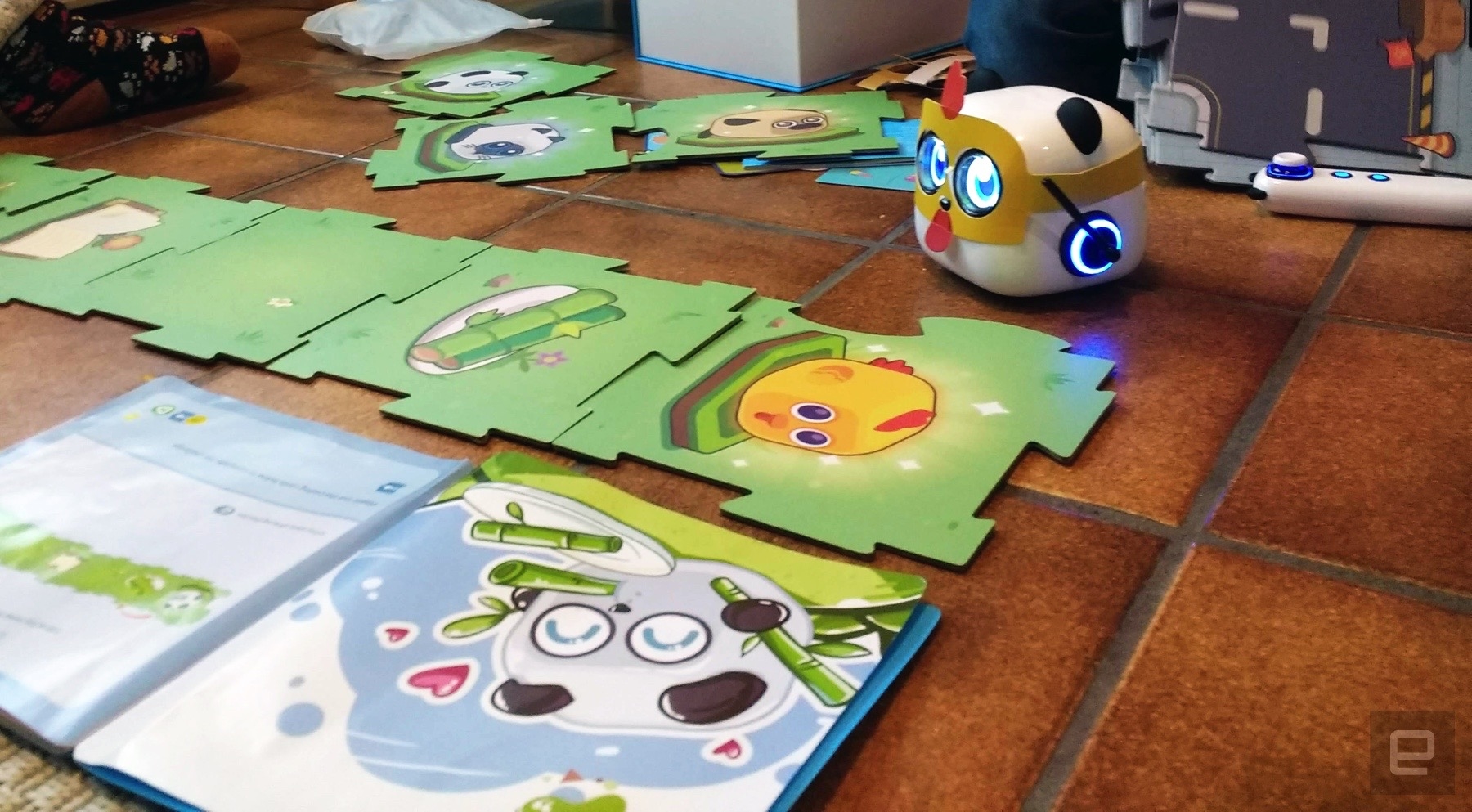
With the latest studies presenting a pretty damning picture of screen time’s effects on children’s development, I’m delighted to hear that screen-free coding is all the rage now. It is exactly what it sounds like: a way to explore the key concepts of coding sans screen. At its core, coding is simply giving a set of specific directions to someone or something to produce a desired result. Nothing in that definition demands a screen.
It is about computational thinking though and the ability to identify and solve problems by breaking the problem and solution into workable chunks. You could teach your kid computational-thinking strategies by asking them to tell you how to make a peanut butter sandwich and it meets the screen-free requirement.
While my kids may want to consume peanut butter sandwiches while they code, hearing that they’re “coding” by telling me how to make them wouldn’t go over well. They want to turn ScratchJr purple and make him curse and jump. They want some form of pixels and plastic to beep and whir and zing. They do not want to watch their mother botch sandwich making because of their bad directions.
Enter mTiny, Makeblock’s cube-shaped robot for the preschool set. It’s cute. It’s fun. It talks. It twirls and giggles and sings. It’s screen-free but uses the same graphics found in ScratchJr in the form of coded cards.
In addition to the USB-rechargeable mTiny robot — with cute panda ears and tail — the kit comes with 36 coding-instruction cards, which are essentially cardboard versions of the ScratchJr graphics. To build codable scenes for mTiny to navigate, Makeblock includes 24 themed, reversible map blocks that kids put together like jigsaw pieces.
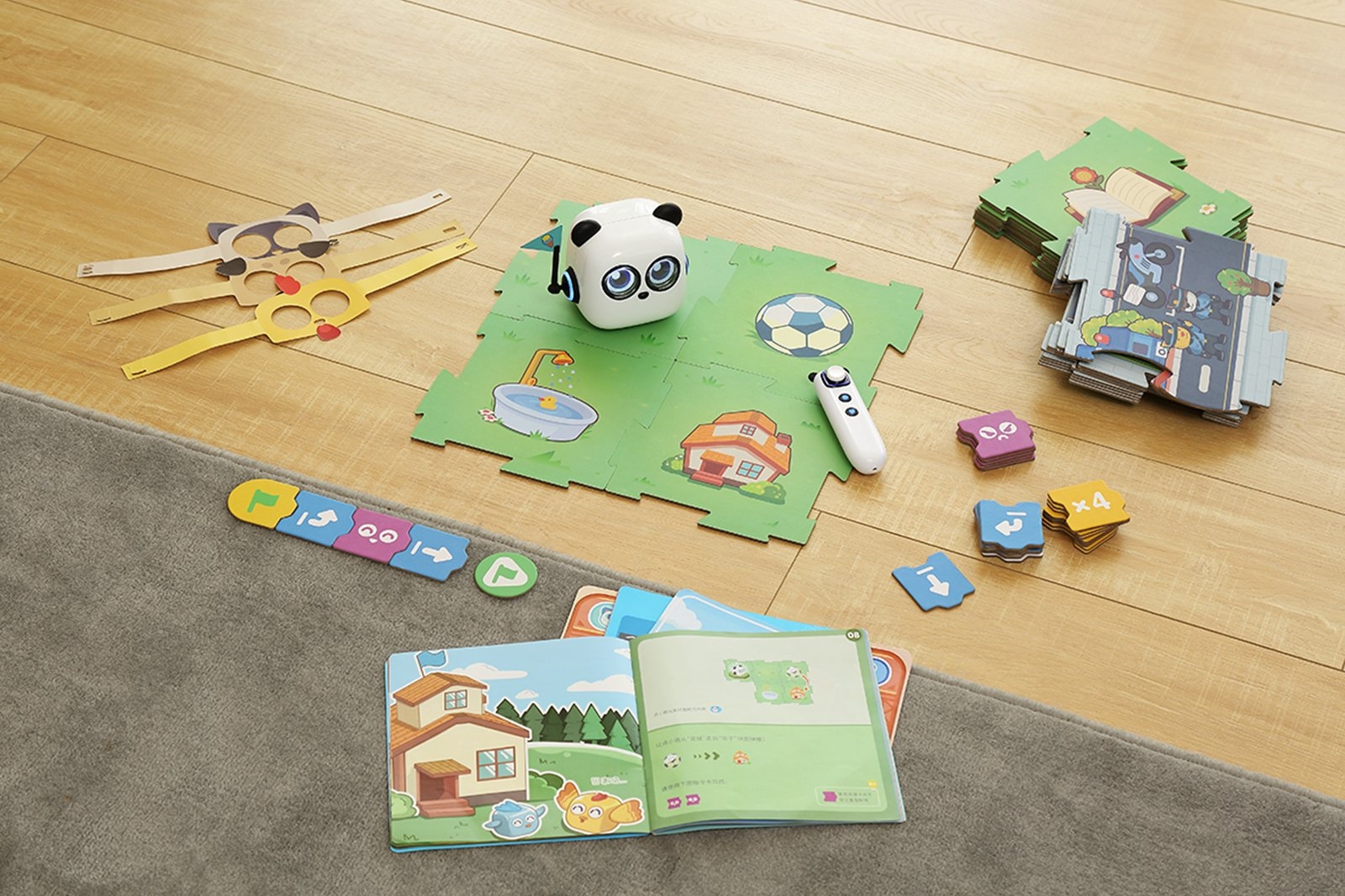
In the box, you’ll also find Makeblock’s rechargeable tap-pen controller, which allows kids to tap out the code using the coding cards. Then there’s the Storybook, tap-pen game cards and decoration accessories, including three animal masks for mTiny. Of the puppy, kitty or chick, my kids favor the chick: On the chick tile, mTiny clucks. My kids think it’s hilarious.
The Storybook activities are a great entry to mTiny. They start with a simple programming challenge: Code mTiny to move in a straight line across one tile, then two, then several, each of which makes the robot respond in different ways when she (we’ve gendered our robot) lands on them. Now, even though they use the map — the more challenging reverse side of the tiles — they still return to those beginning lessons when they need to work through a more complicated problem. In fact, my daughter, who’s five, still works through the Storybook first before she free builds with the map side of the tiles, “just to warm up,” she says.
To code the robot, the kids move the coding tiles in the order they want, starting with the green “go” flag and ending with the “stop” icon, then tap each one with the pen in the order they want the robot to move.
The tiles and cards basically have hidden messages on them. Each is printed with CMYK (cyan magenta yellow black), which is pretty standard. But the black ink here is embedded with carbon and reserved for printing patterns of dots that can be read by mTiny and the pen. Basically the sensor in the pen converts these hidden dots into instructions and sends them to the robot. And a sensor under mTiny uses those dots to tell it about the tile it sits on.
(96)

